


EST 2022
Issue 14, 30th May 2024
Luxembourg
Print run: 515 copies
Chief Editor: Poopee the Poopster Popper Pee
2
Letz guess! Interview
René Magritte Painting commentary 10 Cloud observations Guest travel logs 12
Tf is Esch Biennale? Cannes’ cooler alternative
22
Ansembourg’s Grand-Chateau

Starring:
Auriane MÖCK – your friendly commie neighbour
Daniel SCHENKELS – space jesus but a mad mage
Dorian SOUSA CALVO – thought fish sticks were chicken nuggets
Jacopo MOGLIA – chief contemplative officer
Jason BILLARD – local mushroom enjoyer
José FERNANDES MAIA – poster boy; Mr. Inker Upper
Jo Yi HOON – post-modern-hypnotic-pop tease
Kasra KARAMI – cage builder
Kristina SHATOKHINA – woman of vision; high priestess
Margaryta ALEKSANDROVA – the witch Mégane BAUTISTA – vermillion virtuoso
Nancy LAMBERT – landscape shutterbug
Sherley DE DEURWAERDER – mossy music nerd
Sofia MILLER – entertains the primordial Hylemxylem
Umut UCAK – level 100 yapper
Valère GAUBE – homme à tout faire et n’importe quoi
Yassine ZAOUCH – handsome Instagram Goblin
Zoltan TAJTI – Eastern machinations
Alex KUZMINA – guest writer
We are thankful to: Ramona Ventimiglia and the Office of Student Life, Veerle Waterplas, Sonja Di Renzo, Antonio Tavan, Repro Team, Espace Cultures, Anouk Wies, Karin Langumier, Bianca Pirrelli, Andy Adams of the Alumni Network, Véronique Heitz and Rotondes, Student Lounge
Belval and all children of SAUL, Dalmat CoffeeHouse, Julie Toussaint, LLC, Julie Jephos, Inès Planchenault, Stilbe Schroeder, Virginie Dellenbach and Silvia from Café Saga.


Rimworld: Cella’s Wrath Video game divulgence
28 Rot Boy Summer Is this still poetry?
Unless otherwise noted, all images in the magazine are public domain as described in the Creative Commons CC0-1.0 Universal Public Domain Dedication licence, and fall under no copyright obligations.
Direct all copyright claims to: paper.roux@gmail.com
Find us at: campus buildings (reception areas, magazine stands), Student Lounges, chill-out-zones, Dalmat CoffeeHouse, and LLC.
Join us! We are looking for graphic designers, writers, artists, photographers, admin lovers, reporters and all sorts of sailors willing to (wo)man the good ship ROUX in the upcoming 2024/25 academic year.
Contact us: paper.roux@gmail.com
Find the magazine online: https://issuu.com/rouxmagazine
Instagram: @roux.magazine
Some pages designed using images from rawpixel.com
Cover hand-drawn by Jason Billard
Back cover hand-drawn by Mégane Bautista, Sofia Miller, Kristina Shatokhina, Jason Billard and José Fernandes Maia. Poster p. 14–15 hand-drawn by Sofia Miller
©ROUX Student Magazine. All rights reserved
4 Monologue on nature PRAISE THE SUN! 6 Against Disenchantment Architecture research 9 Hello,
14
16
18
BALLS! BALLS! BALLS! We’re going balls to the wall
How not to drown Short story
Polyamory explained An overview 20
26
fun
Hidden places 24 Myrtle’s heart Short story
Blondies just wanna have
Recipe
ROUX Student
Contents
Magazine
partner of RTL Today
Roux is a
ROUX, a fat gold watch and a toilet lid?
Love set you going like a fat gold watch
Sylvia Plath, Morning Song (1961)
Just touch my cheek before you leave me darling Juice Newton, Angel of the Morning (1981)
I open this letter with the first line of Sylvia Plath’s Morning Song, but why this specific line you may ask? Out of love, ROUX was birthed to help satiate the creative appetites of students and alumni alike, which are valuable contributions during and after university life.
As the semester draws to a close, we would like to say thank you to the university community, particularly to OSL for their patience and continuously championing ROUX. Our gratitude also extends to all of our external partners for allowing us to meet, discuss and write about their bountiful pool of work, for it is wonderful that we can reach so many individuals. Last but not least: thank YOU our wonderful readers! Without you, ROUX wouldn’t be what it is today and we’re grateful for your kind words and ongoing support.
In this issue, we salute spring and summer with bejewelled blondies and beguiling balmy breezes. If you’re feeling adventurous, discover the hidden Luxembourgish gardens at the historic Grand-Château of Ansembourg. Whilst you’re there, in your best Rive Gauche/Droite accent, feel free to recite passages from texts which sing to you. It could be on discovering the unique functions plants such as cacti and carrot flowers have, a tale to understand a lover’s heart or an analysis of a colony management simulation video game. And to add to this glorious scene, our staple poster can — as always — be marvellously displayed in bedrooms, kitchens or on top of the toilet lid!
To echo country singer Juice Newton, make sure to touch ROUX’s cheek before summer officially begins. Prior to that, presently spring is still unwinding, when assessments of knowledge are commonplace. From us at ROUX, we wish you all the very best of luck in your upcoming exams, and are looking forward to greeting you once again at the dawn of autumn.

 By a post-modern hypnotic-pop tease, Jo Yi Hoon
By a post-modern hypnotic-pop tease, Jo Yi Hoon
1

Wanna play with the Fox?
Founders of an Online Game
– an Interview
Rarely do we find such interesting projects in our search for topics as the business venture of six students at the Lycée des Arts et Métiers. Their enterprise is called Letz Guess, with which they represent their school in the competition Mini Enterprises. ROUX was very happy to sit down with two of the six high schoolers, Fohr Sébastien and Flammang Elisabeth, to talk about the present and future of their initiative.
written by Zoltan Tajti designed by Auriane Möck
Let us first introduce the two of you to our readers!
I’m Sébastien, I’m 18 and the CEO and software developer of Letz Guess. I am also responsible for our finances.
My name is Elisabeth, I am 17, and I am Letz Guess’ web-designer. I am also responsible for marketing and communication.
Please, tell us something about the competition you enrolled your project in.
We enrolled in the competition along with approximately 100 other projects. Mini Enterprises is a contest for high school students of Luxembourg. Altogether two teams signed up from our school; one more along our project. The launched enterprises usually focus on selling soap, drinks, or clothing. We are the only ones that have developed a free online product focusing on education.
Play Letz Guess


2
https://letzguess.lu
?? ? INTERVIEW
What is there to know about your business, Letz Guess?
We wanted to come up with something educational, fun, and community-based. We decided to make an online game because it meets these criteria. Playing Letz Guess helps the players get to know Luxembourg better. This is helpful for both locals and expats living in the country. Our game also helps build community, as players can play against each other.
Playing the game is completely free, and there are more than 400 questions with answers in the game at this point. We are now in the seventh week after launching our website, and we already have over 1,000 players! We also have quite a few sponsors and partners: Luxlait, GP Lux, Emile Weber, and Raiffeisen, among others.
What happens if you win the competition?
The competition ends May 22nd 2024, but whatever happens we intend to keep going. Firstly, we think our project is important and makes a difference. Secondly, our partners wish to continue working with us because they believe in our project, and its positive impact on Luxembourg and our community.
We are now working on our mobile app for both smartphone platforms. This will make Letz Guess more accessible to players. Also, whether we win or not, we are giving a prize to all our players!
Is there anything else you would like our readers to know about Letz Guess?
I would like to mention our other four members! Bodé Leslie is responsible for graphic design; she designed our fox mascot herself. There is also Ludwig Sven who is responsible for cybersecurity and data protection of our players. Dondelinger Mathieu is our head of research, and Friederici Fabien is also doing research – they are the ones who come up with the questions of the game.
We attended a student-company fair in Germany, in Neunkirchen. Letz Guess won the Best Pitch Award. We were also in Belle Etoile where our project was given very positive feedback by Luxembourg’s Minister of Education. This April we are attending the Students Expo at LuxExpo.*
And of course – join the community of our players, and learn fun facts about Luxembourg. We guarantee you’ll have fun and will be surprised by some of the trivia!
About Mini Enterprises: https://minienterprises.lu
*D’YEP! Schoulfoire: https://schoulfoire.lu/

ROUX



M o n o l o g o n N at u r Monolog on Natur

ave heard ab out plants, often green, plants are strange an hey come in all shap es and sizes and have many function o oms, pro ducing fruits and vegetables or scratching your rt pants close to bushes. It turns out, that almost all plan at is comp osed of four parts: ro ots, stem, leaves and flowe s and water from the ground, the stem, which also supp o t up to the leaves where the nutrients are stored and the more energy. Finally this flows into the tive organ aka the flower. The flowers b generation of the plant. Or at least that t to their en





tic spines, whilst the stem has n trees, the distinctions tem, the leaves and flowers is ing. If you take a lo ok at a many leaves. Hazelnut tree flowers etween the male flower, hanging and spreading p ollen all over, and the tight pink female flower ab ove, waiting for the p ollen to form a fruit. Most plants have b oth parts releasing and awaiting the p ollen, often in the same flower, sometimes, like in Hazelnut trees, separated into two different kinds of flowers but still on the same plant. However, exceptions such as kiwi plants that grow with exclusively male or female flowers exist. Carrot flowers are also quite b eautiful, but we don’t get to see them often b ecause we massacre them brutally b efore they can flourish. Absolutely worth it in my opinion, I love carrot cake.

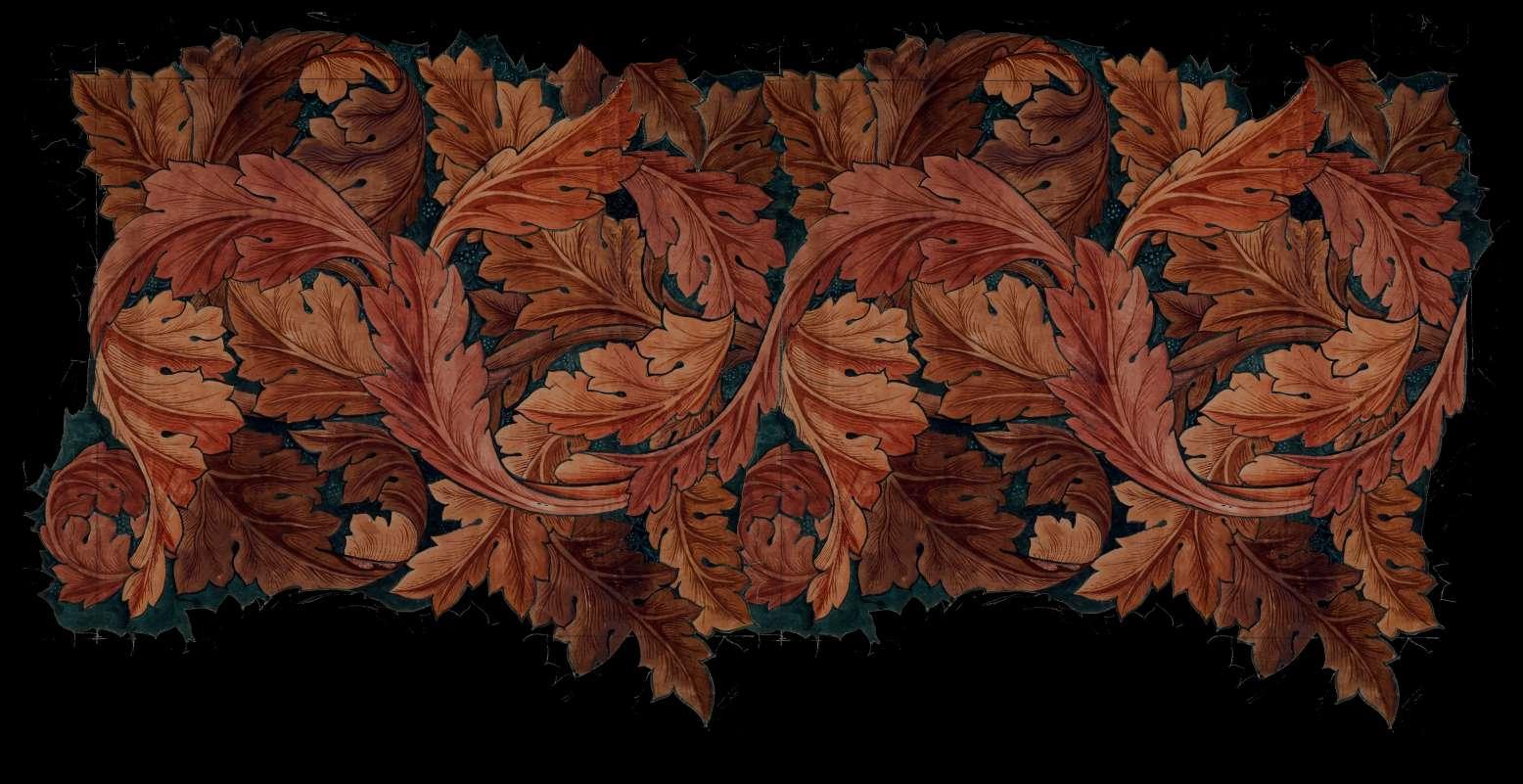
 Cactus Cactus
Black Locust
Hazelnut
Male Flower, Female Flower, Fruit
Cactus Cactus
Black Locust
Hazelnut
Male Flower, Female Flower, Fruit
PRAISE THE SUN
Carrot


Schematising plants into these four comp onents is a fundamental idea in b otany. But the average folk nowadays knows much less ab out plants and nature than half a century ago. Thanks to the development of technology, the city p opulation increased and so ciety shifted from a p opulation that worked in the fields and remained close to nature, towards to day’s so ciety that functions and entertains itself through computer systems. This has resulted in a significant decrease in our interaction with nature –our increased usage with simple human-made devices such as phones have resulted in sp ending less time with nature.Technology and convenience decreased our connection b etween humans and nature. Instead of walking under the trees and hearing the birds chirp, we sit on a train listening to music on headphones. When we buy fo o d in sup ermarkets we don’t feel a strong connection to nature The fo o d we consume is so
 Written and Designed by Jason Billard
Written and Designed by Jason Billard
Humans are a part of nature, and we are as ephemeral as the us surrounding oak trees and as fragile as butterflies. We app ear in this world, flourish and rip e throughout our life, and turn back to the ro ots after planting seeds for future generations. Humans are nature, I am nature, you are nature, we are the movements on earth – the blue ball orbiting around the mystical luminous flame. In other words, we are the sun, the very essence of the solar system. We are the stars and galaxies forming the clear night sky that I admire b efore falling asleep. And you are everything that I lo ok forward to when I wake up the next morning.



ROUX 5
Against Disenchant
The expression Disenchantment of the world was first used by German sociologist Max Weber in the early 20th century to describe a process in which the modern world rapidly characterised itself by rationalisation, secularisation, and the decline of traditional beliefs and magical thinking. Such disenchantment – the vanishing of the religious and the sacred from our world – was then borrowed from Weber by feminist scholar Silvia Federici. Reinterpreted by her politically, the disenchantment I’d like to discuss lies in the emergence of a world in which we lose the capacity to recognise the existence of a logic other than that of capitalist development. This disenchantment corrupts our relations to land, resources and labour. Today it culminates in a housing crisis, corporate monopolies and wage slavery.
Students of architecture, in our master thesis research my friend and colleague Christine and I asked ourselves:
What does this disenchantment mean architecturally?
How could we use our architecture to resist it?
(A little disclaimer before we proceed – In the previous ROUX issue, I wrote a short overview ofn the history of ruins where I explored how ruins had been exploited for centuries: from mining their materials and romanticising their aura to becoming a tool for modern economic and urban development. I kindly suggest you take a look at it before we go on.)


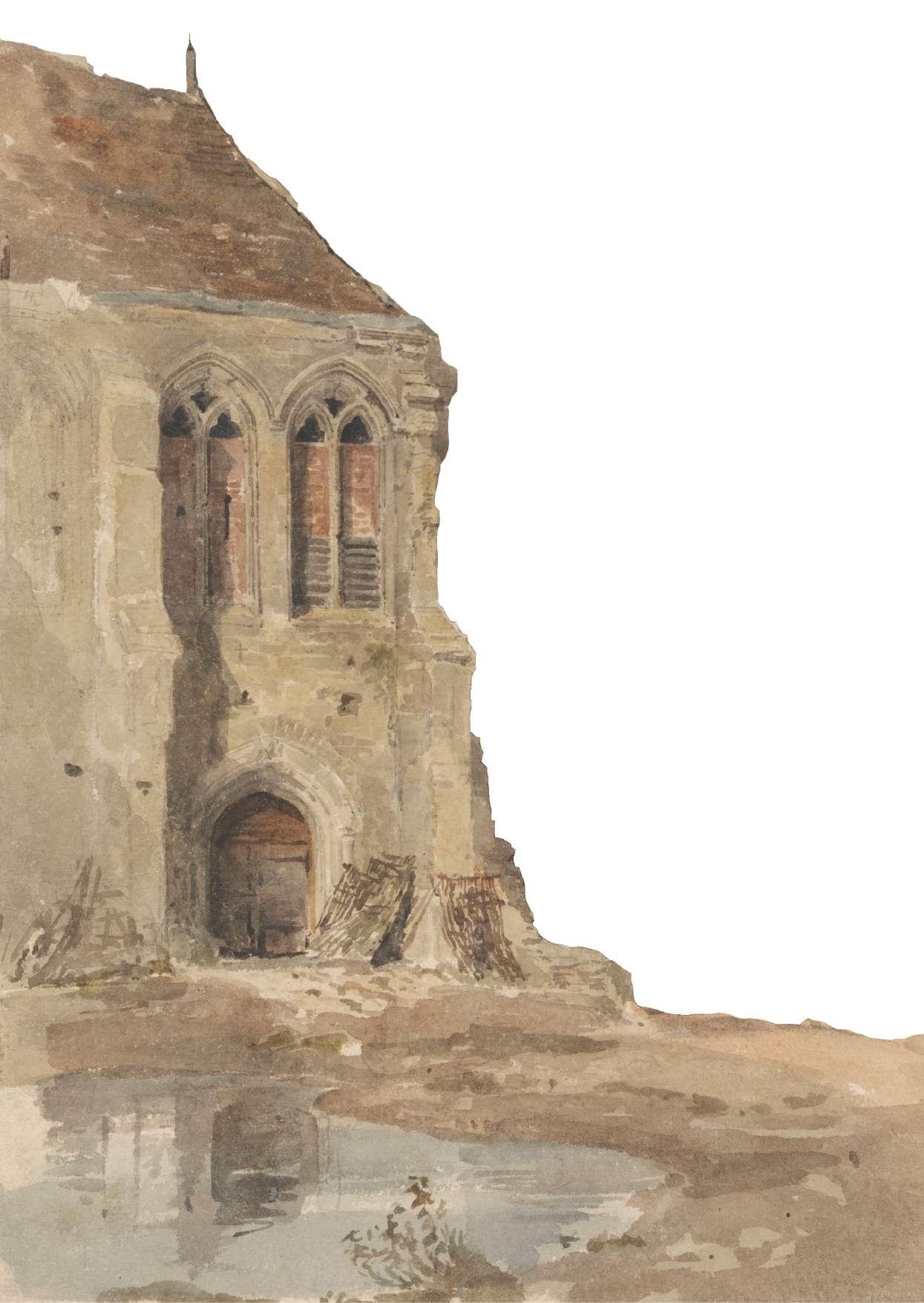
ARCHITECTURE RESEARCH
6

Disenchantment
We decided to start by looking into and learning from the most enchanted of all the architectural forms: the ruin.
Scholars researching the phenomenon of ruin today agree about its power to transform our perception of time and space. The slow disintegration of abandoned buildings is antimodern – it exposes what modernity seeks to conceal, revealing that its vision of continuous progress is nothing but an illusion. Instead, the ruin phenomenon can help us understand the current system in which we live as a repetitive cycle of destruction. This discovery forces a reevaluation of capitalism’s true impact on society and the environment: architectures, communities, and ecologies ruined. These transgressive qualities turn ruins into potential places of rebellion, alternative ways of living guided by the values of care and repair we would like to explore in our thesis.
What if we reclaimed the modern ruins of our cities as a refuge for vagabonds and witches, as places of resistance against the disenchantment of the world under capitalist exploitation? Take a closer look at the abandoned factory in your hometown: feel its crumbling walls and overgrown courtyards triggering our collective (albeit a little rusty) imagination; accept the ruins’ invitation to explore other ways of living in the broken world. In the context of a society increasingly alienated from its history, culture, and environment, ruins force us to confront the modern narratives that seek to erase the traces of the past. They are a perfect base camp for all of those who wish to embrace the complexities and contradictions of our shared heritage.
Then, who are the witches and vagabonds of Luxembourg? For years young people, immigrants, and even Luxembourgish families have been exiled from their homes to Trier, Metz and border regions because of unaffordable rent. As a result, the inhabitants consist of a very homogenous middle-class that can afford a rent of 2000 euros a month. Reclaiming ruins for affordable social housing would help bring these communities back home, and, while at it, preserve our architectural and cultural heritage. Thus, we would end up reclaiming not only physical space but also the power – arguably, magic power – to shape our cities.
The first step in reclaiming ruins is, first and foremost, to locate them. There are multiple ways through which we have been researching over the past 3 months : walking on site, consulting archives, talking to locals and tracing the evolution of the facade through years on Ggoogle Mmaps. We’ve found many abandoned buildings in the vicinity of the Esch-sur-Alzette centre. Some of them are too ruined to live in, some are only beginning to deteriorate. All of them were abandoned for at least 7 years.

ROUX
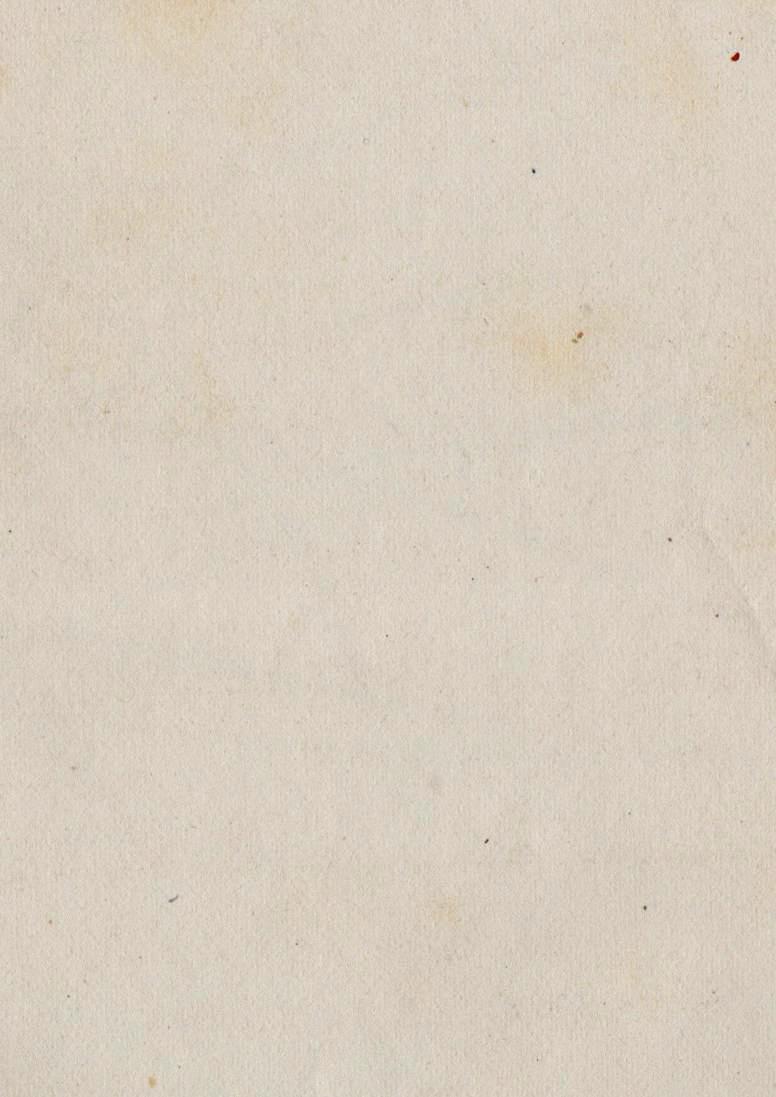
Upon analysing the ownership we’ve found that none of the abandoned buildings were owned by actual small owners, average citizens like us. It’s always either the commune, or state, or big corporations, or real estate investment companies. Hence, the ruined buildings are often located in clusters, each of them having the same corporate owner.
In our master thesis, we want to ask ourselves if it’s still possible to tear these ruins out of the speculation cycle and “re-enchant” them. If yes – then how?
Surely, we would not want to make anyone interested in the answers wait too long. The public defence of our master thesis will take place in SPEKTRUM, Rumelange on the 26th of June. There, you can get acquainted with our research and the design proposal itself –everyone is welcome to join our presentation and discussion afterwards!
Looking forward to seeing you :) written, designed and spell-bound by Kristina
Shatokhina
ARCHITECTURE RESEARCH
Esch-sur-Alzette ruins, 2024.
Photos by Christine Chen & Kristina Shatokhina

Dear Caladrii,
I bet you’ve noticed it before: sometimes, you look at a work of art and see “something”, and the painting subsequently becomes adorned with theories and legends. But in reality, everything turns out to be simpler. It’s YOU depicted in the painting.
A man in a classic suit, tie, and bowler hat, an apple covering his eyes, leaving us unable to understand or decipher his face or personality – The Son of Man by René Magritte has accumulated many theories and stories. Some believe it portrays the “Adam of the New Era” dressed in contemporary attire, but still craving the forbidden fruit. Another theory suggests that we observe the modern man, who is so focused on material things so he misses out on the world around him and its opportunities, or that in front of us stands an individual who, despite portraying themselves in society as a person of high morals, succumbs to temptation.
But in reality, everything is slightly easier – or not.
Let’s move backward to 1964. Magritte’s friend and lawyer from New York, Torczyner, asked him to create a self-portrait, but the artist hesitated, calling it a “conscience problem.” In his response to Torczyner, Magritte explained that he included himself three times in a “portrait,” clarifying that he aimed to paint a painting, not to create a portrait.
“All that we see hides something else.”

So, ladies and gentlemen, The Son of Man is a self-portrait of René Magritte. And though art critics’ opinions can help us look at this masterpiece from a completely different angle, it’s equally interesting to learn what the artist himself had to say about his work.
Magritte aimed to illustrate one human quality: people always want to know what is hidden. The surrealist described the painting as follows:
“At least it hides the face partly. Well, so you have the apparent face, the apple, hiding the visible but hidden, the face of the person. It’s something that happens constantly. Everything we see hides another thing, we always want to see what is hidden by what we see. There is an interest in that which is hidden and which the visible does not show us. This interest can take the form of a quite intense feeling, a sort of conflict, one might say, between the visible that is hidden and the visible that is present.”
Take a closer look at the portrait. Could it be that YOUR face is actually behind the apple?
Yours sincerely, The Goth Witch
Written by Margaryta Aleksandrova
Designed by Kristina Shatokhina
The Son of Man, 1946 by René Magritte



Travel Journal - Entries
01/03/2024
It’s funny to think how something that used to seem so forbidden and arbitrary to a youngling’s path of life, is now the essence of relaxation for a bare adult. The pungency of smoke entering the realm of the airstream; the same smoke that used to choke and make me suffocate is now, seemingly, the only air I breathe.
What was once taboo, so unforgiving in its residue, is now just another aspect of the day. Something to do at dusk and dawn, something to feel and something to do to forget and to distract.

 written by Alex Kuzmina / designed by Sherley De Deurwaerder
written by Alex Kuzmina / designed by Sherley De Deurwaerder

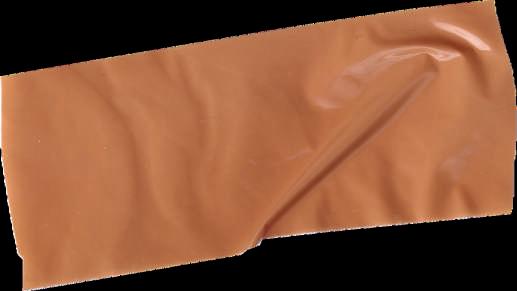

ods, the soft fabric of my dark , a Fleetwood Mac song twisting released from the confines of the house I've been locked inside of for the past few days because of the recurring waves of sickness and flu, whose grasp doesn’t seem to let me go. I light up a cigarette; mixing in the smell of the past and coming rain with smoke-entangled breath. I feel a little better.
I stand at the top of the hill that overlooks almost the entirety of my town – a temporary place I’ve mustered up the courage to call home – looking up at the sky whose clouds engulf me in light spring rain. These hugs however, do not enclose me. The trees beside the bench I’m standing in front of hold their hands out to filter the rainfall, allowing only a few drops at a time to caress the hood of my jacket; gently, softly, ever-so-slightly tapping my forehead. Almost as if God is kissing my temple, vicariously through the world around me.
.

Passing the smoke through the small gap between the top half of my teeth and bottom lip, I listen in and breathe into the music sifting through my headphones. The mélange of the output of technical advancement, the chirping of birds, and the light taps of the rain above. I look up, or rather in front, at the clouds, noticing how fast they pass. Only the outer layer though, the closest to earth, to us, to me, almost as if to say that the worst always passes first. It leaves the rest to intermingle in the way it wants, the way it pleases.
Looking at this scene, the liberty of its mundanity, or rather from its mundanity, I think of a poem I wrote for English class when I was fourteen; the first line being “I am a lover of grey skies” but I’m not. Because these grey skies, these clouds I’ve always found myself looking at – are blue. There’s so much depth in blue, way more to picture than grey.





GUEST TRAVEL LOGS

08/04/2024
I can feel my human beat – that of my heart – in my teeth.

Often I hear, and in turn, feel, this sort of silence wash over me. But at its core, it’s not silence: It’s a sort of static noise, almost the covering of a high- pitched beep lost in the magnitude of the tangible wall of static.
It slows everything down.
I feel almost outside of myself if it weren’t such an
internal happening.

24/04/2024


Sitting on this bus, taking an off-road to get to Pétange, I look out my window – situated on an empty four-seater, nothing but my bag beside me and few people out front –and see the hazy sky; a baby blue turning dark at the turn of dusk. I think about how commune to commune, town to town, from one end of the south to the other, all landscapes look the same in this country.
Same outlines of poplar trees, the same ol’ hill that marks the end of a trail, whilst simultaneously serving as a backdrop for the next; same hint at the glimpse of stars. Maybe God got bored when designing this place. Every road feels as if it were an imitation of the one just seen prior, the same one I just saw a few moments ago and, yet... the same one I’ve seen for years on end.







CANNES’ COOLER ALTERNATIVE



How not to drown in a glass of water
by Kasra Karami

The truth is that my warm coat does not fit in my small weekend bag. However, it seems that the weather is mostly sunny in the upcoming week, except for Thursday when a thunderstorm is predicted. So, I’ll stay in the hotel on Thursday, and walk a few streets less, and probably miss out on a local meal at a good restaurant. And what does it matter, those streets will be added to the endless streets that I will not see for the rest of my life, and that food will be added to the list of foods that my mouth will not taste in my lifetime. I have fallen out with life one-sidedly. I want all that man has lived in the world, and all that he has seen, heard, and experienced. I like to feel the change of seasons on the farm like a farmer who has spent his whole life in a village, and I like to spend my days going to delivery points and passing by the plains and deserts like a truck driver. I want to be everybody with all my heart and life does not accept that. I want the joy of all
from embracing their beloved. I want all the wounds of the heroes of yesterday on my body. I want to dream all the dreams that have ever been seen. I want to knit as many scarves for the children as all the mothers in the world together. And the word “but” becomes the cruelest word in the world that does not allow me to put a full stop at the end of my sentences: but... it can’t be.
I don’t want to live up to my capacity. If I don’t have enough time to sit on all the beaches of the world, what difference does it make if I go to ten beaches or a hundred of them by the end of my life? My life is no longer a race to experience like it was in previous years, and it’s been a long time since I stopped envying when my friends told me about their previous trips.
But you can’t go too far without a purpose. After a while, you find yourself struggling to hold back your passion. Standing still is
SHORT STORY 16
no fun. It’s as if the film is being recorded, the dialogues are being delivered, and an actor stubbornly refuses to act. So instead, I focus on my role in life’s scenes. I pack my bag without a coat. One, two, three, action:
Openingscene-
Noon, Milan, in front of Duomo, sunny
My friend is talking about choosing a restaurant for lunch. A voice in my head keeps shouting: -What difference does it make? what difference does it make? I stop myself from spilling out this sentence with all my strength. The delivery of this sentence makes the end of our conversation and the end of this scene, while nothing has yet happened in this take. I discuss our choices louder than the voice in my head. At the table, I force myself to read all the details on the menu before making a choice. I try other people’s food, and when they ask me about the taste, I just mumble something as my opinion.
Nth scene -
Night, La Spezia, next to the pier
I have forced myself to prolong this part of my movie instead of going back to the hotel room and resting. The port is quiet, and there’s no sound to engage my mind with. I sit on the edge of the dock
it. It’s a two-way ticket dated for today. A traveler has decided to spend their afternoon in a nearby town whose name I hadn’t heard before. I write down the name of the place, and I hear the sound of splashing. The fisherman is pulling his hook out of the water. I don’t look at the hook, fearing that I might see nothing attached to it and the competition would continue. I stand up and head off.
End(?)scene -
Morning, Porto Venere, inside a gift shop
I look at the postcards. I want to take one card from each stack of the first row and be done with it. It’s a ridiculous idea. The top rows are the pictures of the nearby sights that I did not include in my trip plan.
I think it would be nonsensical to give my friends postcards of places that neither of us has ever seen. The bottom row is the old pictures of the streets and beaches where I have walked. The photographer, who is surely no longer alive, brought his camera decades ago to the streets on a sunny day like today to say that life is what you see here, and it will remain so. Don’t expect anything more from life than these hotels, trees, ice cream shops, and the sea. An elderly woman behind the counter is keeping herself busy entering numbers into the cash

17 ROUX



18 POLYAMORY EXPLAINED



ROUX
Cella’s Wrath:
A RIMWORLD REVIEW
I recently got addicted to a single-player colony simulator. But it is not a game, it is selfdescribed as a “story generator”, as all the events in the game are simulated and generated by an “AI storyteller”. There are 3, but one shines brightest. His name is Randy Random, and he is as much of a “storyteller” as he is a “psychopath”. He has no desire to tell a coherent story and no moral compass or regard for your overall well-being. He lives in the present and generates completely random events for you that do not necessarily have a logical flow.
The goal of the game is simple: you have crash-landed on a planet, and now you have to get off it. But you aren’t alone on this planet, there are other civilizations, tribes, pirates and raiders, and wildlife; and you are welcomed by none of them.
The game is very detailed, to the point where most would get discouraged to play it due to the steep learning curve.
written by Umut Ucak

As a reviewer, I could explain and give feedback on the mechanics and features of the game; but that would both be overwhelming and redundant, because the mechanics of the game are overly intricate, making it impossible to cover it in a short, written review; also, a more fun Rimworld review has already been made by SsethTzeentach. Instead I will tell you a story from my first game.
I had 4 colonists. We farmed rice and potatoes, and hunted deer and alpacas for meat. I wanted to expand more, so after conducting careful market research and an analysis of global politics I arrived at the logical conclusion that I should mass produce cheap and addictive hard drugs, and trade them for food, medicine and weapons. The settlements would implode from the subsequent epidemic I had bestowed upon them, creating a power vacuum in the local area, which I would gladly fill, all while making myself richer, allowing me to peacefully unburden my neighbors of their earthly troubles.
VIDEO GAME REVIEW
- designed by Dorian Sousa Calvo

Winter was nearing, so I got to work. Problem: to realize my dreams I had to produce a lot of drugs, which meant I needed a lot of raw materials, which really meant that I needed more manpower. Luckily, a slave trader was passing by. He had a 6 year old Yttakin girl (the beastren of this world) and a 40 year old man for sale. The man cost 4x more than the girl. Money is tight, so I bought the girl. But before you judge, I had noble intentions! I would raise her as one of my own, providing her with safety and shelter in exchange for labor. Thus, Cella was the newest addition to our settlement. This can only be a good thing!
I let her clean, haul, and execute other similarly simple tasks, as she is an incapable 6 year old child, allowing the rest of the colony to focus on production. Shortly after laying the groundwork for my drug empire, I was given notice of a nearby raider camp with lots of food and little defense. Winter was nearing, and I needed the food. I sent 3 of my colonists on this noble quest, leaving Cella alone with my pet monkey Zara and my doctor Jen. However; after only a couple hours of their departure, Cella realized we lowered our defenses, and quickly capitalized on it.
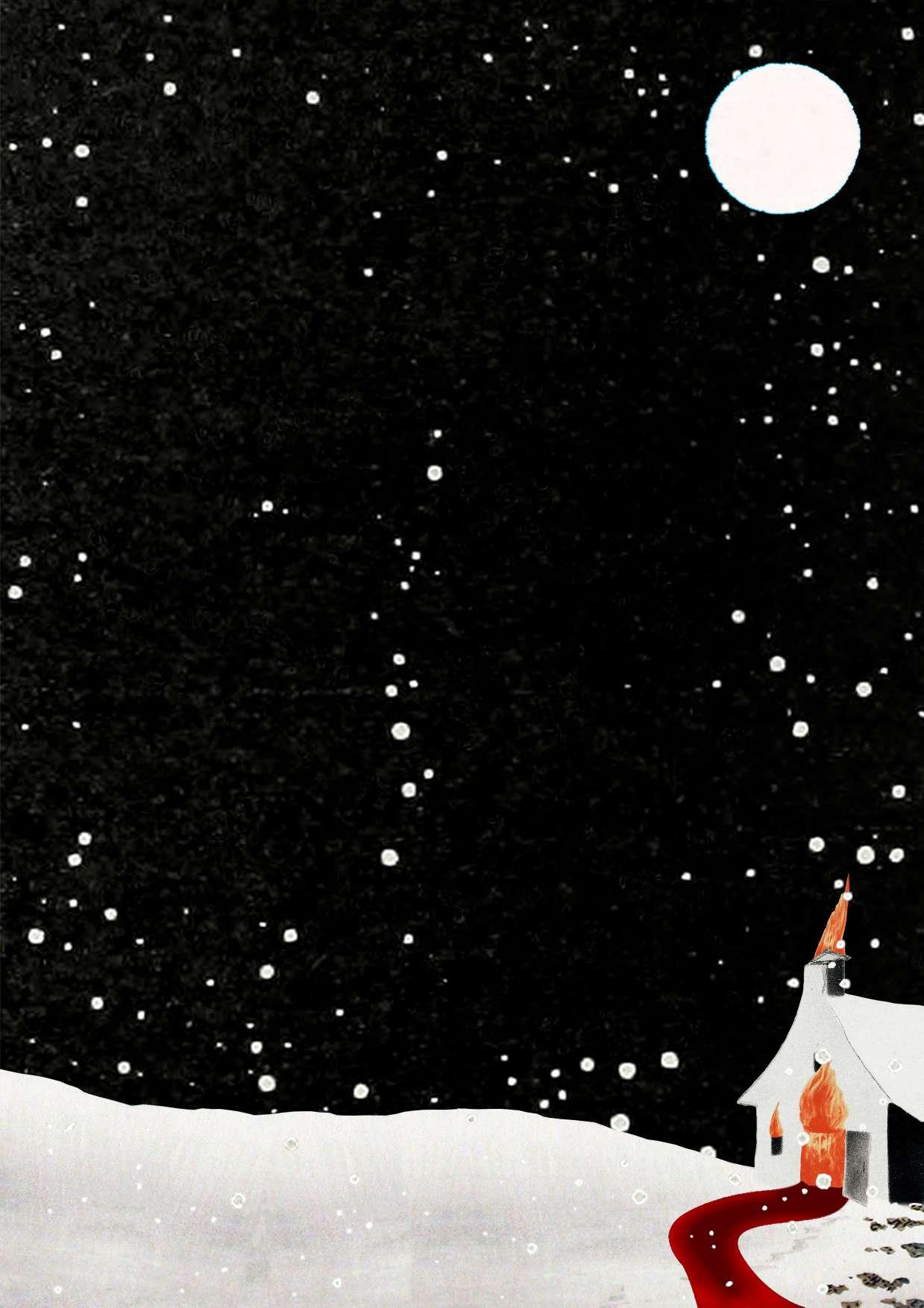
Cella went berserk, kicking and throwing things in the dining room, scaring Jen away. I grabbed Jen by the shoulders and gave her my best Phil Jackson impression, hoping to inspire her to discipline Cella before things got out of hand. After my pep talk, she grabbed the monkey, a revolver, and went into the dining room to settle things down. I warned Jen “Do not shoot her, just scare her.”, and she nodded. When Jen and Zara entered the room, Cella took the initiative and lunged forward, grabbing Zara, and tearing its head off. Jen froze in shock, couldn’t lift a muscle. Seeing her monkey’s head roll on the floor, a rage filled her, and she charged towards the child. After trading blows, Cella broke Jen’s kneecaps, immobilizing her. The gun flew across the room.
As Jen crawled away for her life, smearing blood everywhere, Cella went around the dinner table, picked up the gun, and shot Jen. She then set my dining room on fire, grabbed all my remaining food, and fled. My entire base burned down.
When my colonists returned from their mission they found nothing but the charred body of their now-gone friend. As a snowflake landed on one of their cheeks, they realized, winter is here. Then I realized, I lost the game. Then a spaceship full of milk fell from the sky. Thanks Randy.
9/10 Final Score:


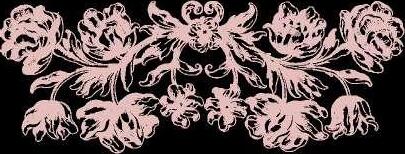
The Gardens of the Grand-Château of Ansembourg
Being one of more than 70 castles in Luxembourg, the Grand-Château of Ansembourg is not one of the most touristic ones. While the castle itself is a private property, its gardens are open to visitors. A family of master blacksmiths laid them out during the first part of the 18th century. At the beginning of the 1990s, the current owners decided to restore the gardens and the castle under the guidance of the Service des Sites et Monuments Nationaux (Department of National Heritage and Conservation).
Extending over 3.5 hectares, the gardens include pools, decorative steps, statues and fountains among others.


22
LOCAL PHOTOGRAPHY



Als eent vun iwwer 70 Buergen a Schlässer a Lëtzebuerg gehéiert de Grand-Château vun Aansebuerg net zu deenen touristeschsten. Wärend d’Schlass selwer am Privatbesëtz ass, si seng Gäert fir de Public zougänglech. Eng Famill vu Schmattmeeschter huet se an der éischter Hallschent vum 18. Joerhonnert ugeluecht. Ufanks vun de 1990er Joren hunn déi aktuell Besëtzer decidéiert, d’Gäert an d’Schlass ënnert der Leedung vum Service des Sites et Monuments Nationaux ze restauréieren. D’Gäert erstrecke sech iwwer 3,5 Hektar an ëmfaassen ënner anerem Waasserbasengen, dekorativ Trapen, Statuen a Sprangburen.
text and photos by Nancy Lambert
ROUX 23
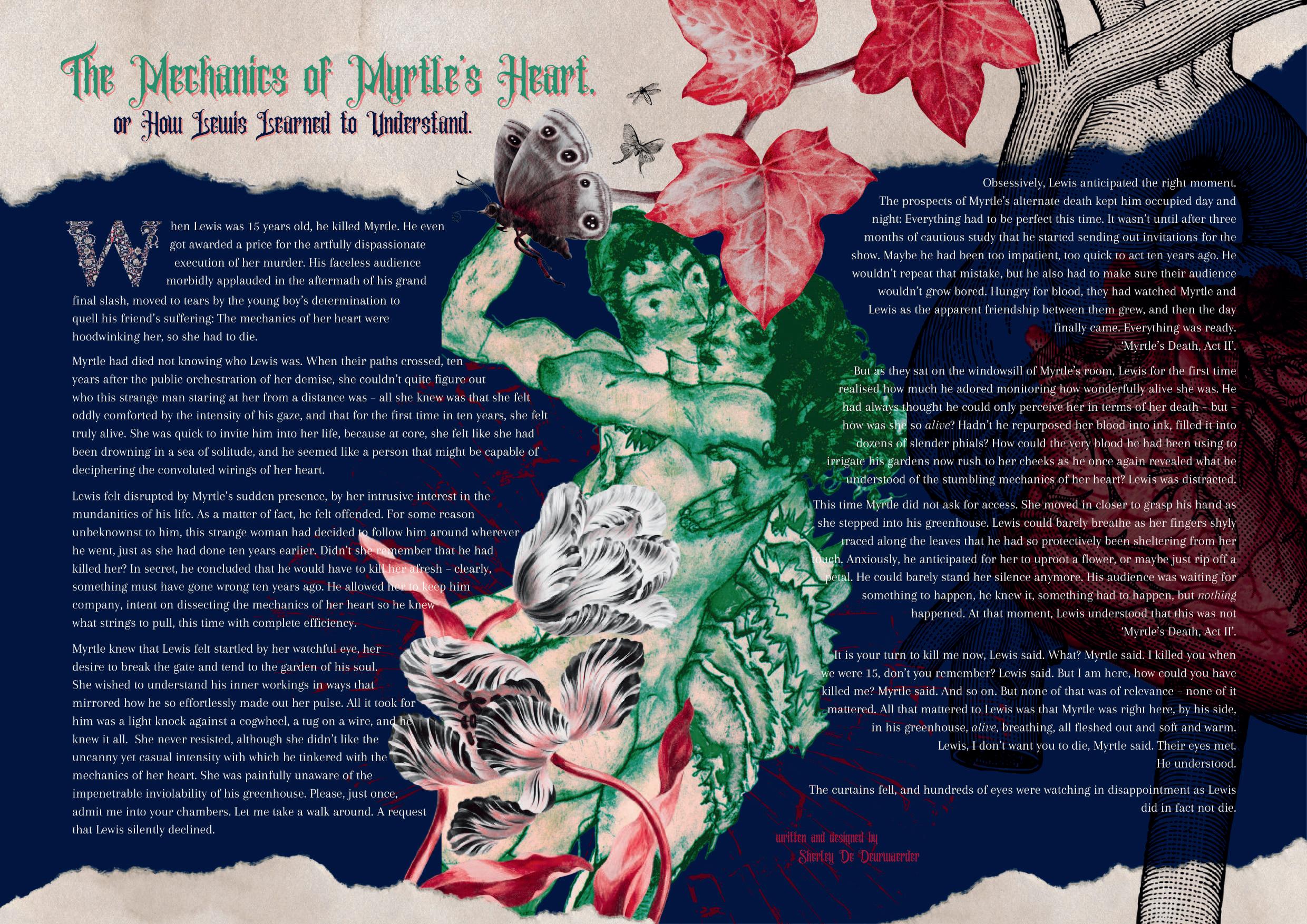
SHORT STORY


26 RECIPE ,

27 ROUX

ROT BOY SUMMER

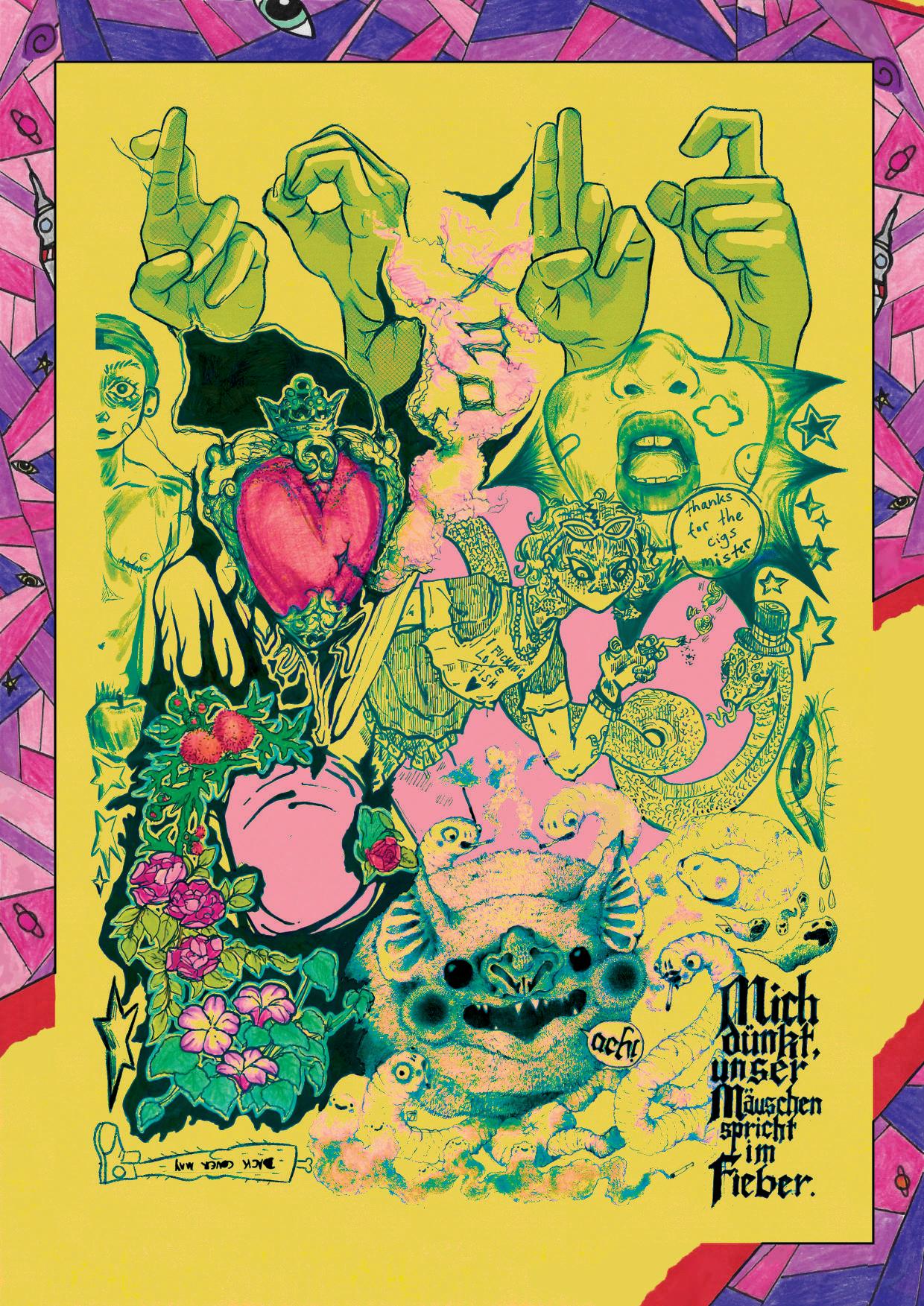








 By a post-modern hypnotic-pop tease, Jo Yi Hoon
By a post-modern hypnotic-pop tease, Jo Yi Hoon















 Cactus Cactus
Black Locust
Hazelnut
Male Flower, Female Flower, Fruit
Cactus Cactus
Black Locust
Hazelnut
Male Flower, Female Flower, Fruit

















































